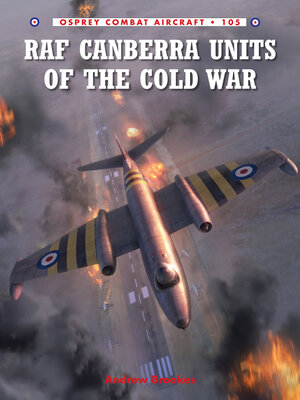
Sign up to save your library
With an OverDrive account, you can save your favorite libraries for at-a-glance information about availability. Find out more about OverDrive accounts.
Find this title in Libby, the library reading app by OverDrive.



Search for a digital library with this title
Title found at these libraries:
| Library Name | Distance |
|---|---|
| Loading... |
A detailed history of the Canberra, which saw considerable service as a photo-reconnaissance platform for no fewer than 19 squadrons from the early 1950s through to 2006.
From its first public demonstration at the Farnborough Airshow of 1949, the English Electric Canberra bomber captured the attention of the aviation world. It could outmanoeuvre all the fighters of the time and it could climb way above their operating ceilings. Yet this Cold War equivalent of the Mosquito was simple to maintain and a delight to fly, although it could bite any pilot who did not treat it with respect. The Canberra B 2 first flew on 21 April 1950 and entered frontline service with No 101 Sqn in May 1951. In a testament to the aircraft's benign handling characteristics, the transition programme consisted of only 20 hours in the Gloster Meteor and three hours in the dual-control Canberra trainer.
With a maximum speed of 470 knots (871 km/h), a standard service ceiling of 48,000 ft (14,600 m) and the ability to carry a 3.6-tonne (7,900-lb) payload, the Canberra was an instant success. Here is its story.
From its first public demonstration at the Farnborough Airshow of 1949, the English Electric Canberra bomber captured the attention of the aviation world. It could outmanoeuvre all the fighters of the time and it could climb way above their operating ceilings. Yet this Cold War equivalent of the Mosquito was simple to maintain and a delight to fly, although it could bite any pilot who did not treat it with respect. The Canberra B 2 first flew on 21 April 1950 and entered frontline service with No 101 Sqn in May 1951. In a testament to the aircraft's benign handling characteristics, the transition programme consisted of only 20 hours in the Gloster Meteor and three hours in the dual-control Canberra trainer.
With a maximum speed of 470 knots (871 km/h), a standard service ceiling of 48,000 ft (14,600 m) and the ability to carry a 3.6-tonne (7,900-lb) payload, the Canberra was an instant success. Here is its story.







